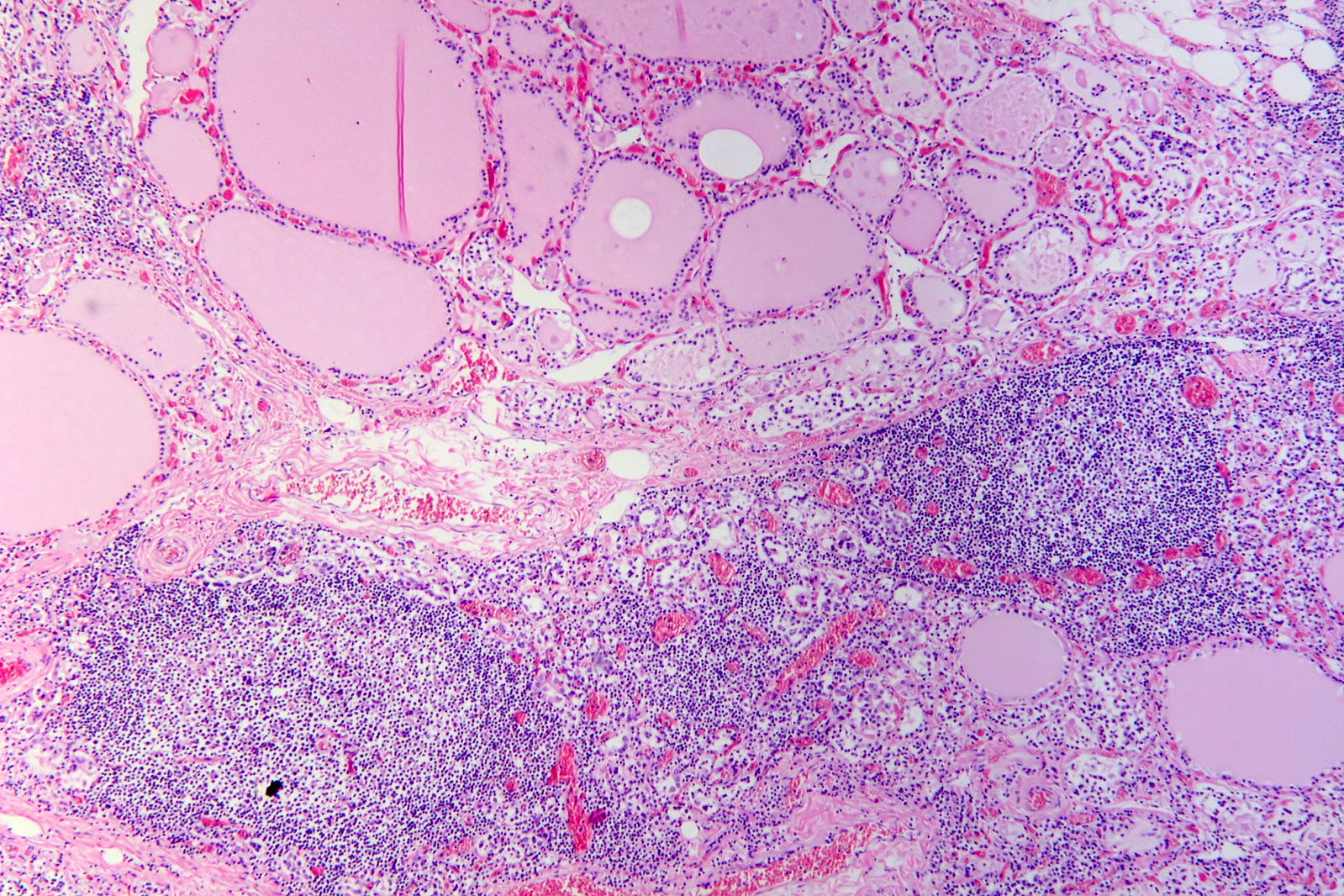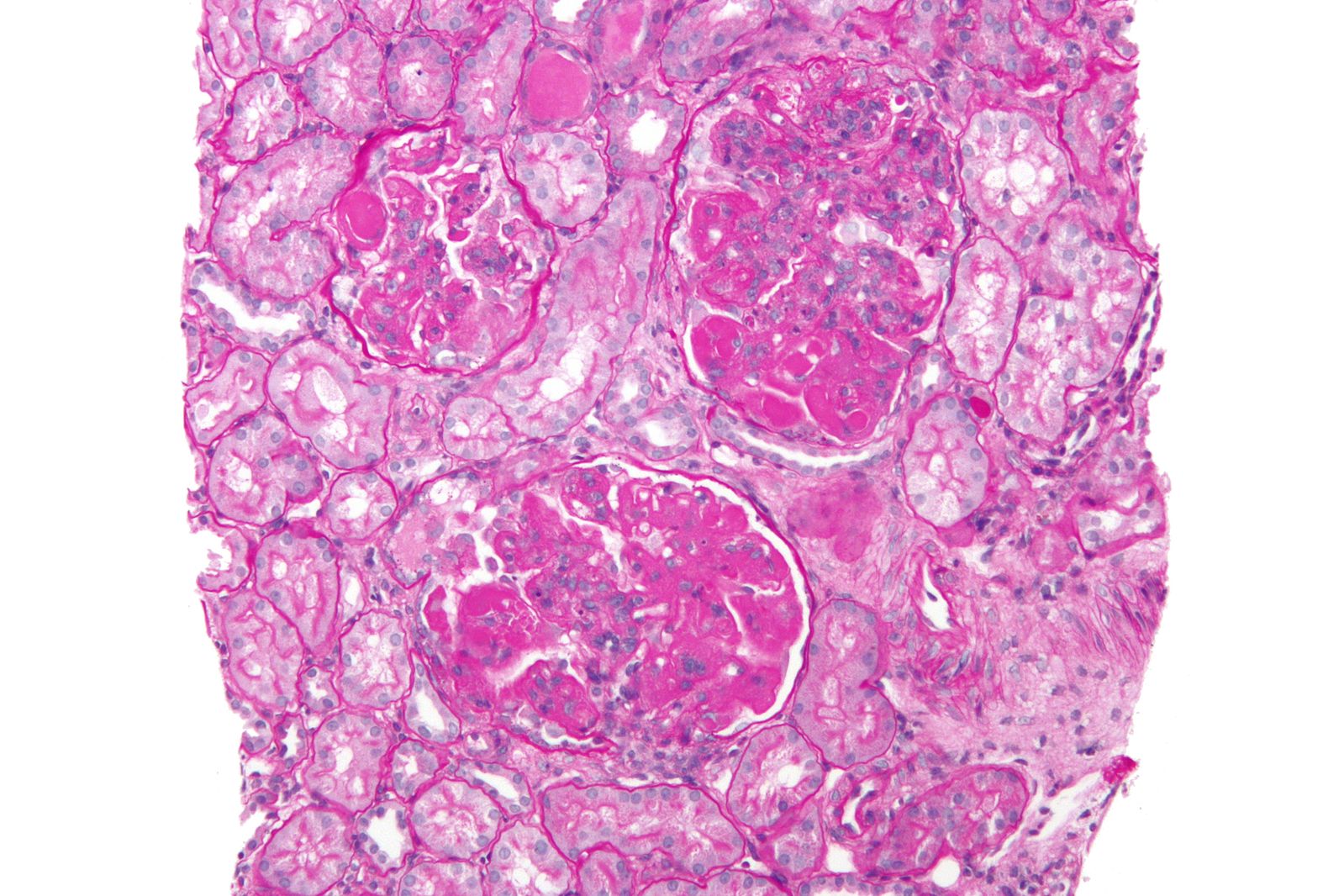Difference Between Hashimoto’s and Lupus
Hashimoto’s is a disorder of the immune system in which the body produces antibodies which attack the immune system. Lupus is a disorder in which the immune system of the body attacks healthy tissue and affects multiple organ systems.

What is Hashimoto’s?
Definition:
This is the condition in which the immune system attacks the tissue of the thyroid gland such that the level of hormones being produced becomes abnormal.
Symptoms:
Symptoms include the presence of a painless swollen area in the neck where the thyroid is. This swollen region is called a goiter and is usually very noticeable. The person may also have excess hormones or have too few hormones in the bloodstream. If there are too few hormones being produced then there will be other symptoms such as a gain in weight and slow metabolism.
Diagnosis:
The levels of thyroxine and thyroid-stimulating hormone can be tested for by completing a blood test and comparing the concentration of these to the usual values found in healthy individuals. Other antibodies such as thyroid peroxidase and antithyroglobulin may also be at high levels in the bloodstream compared with the typical concentrations. The thyroid can also be examined using ultrasound to see if there are any nodules present.
Treatment:
The standard treatment for the condition is the life-long treatment of thyroid hormones to replace what the thyroid is not producing.
Causes and risk factors:
Genetics is a strong risk factor and certainly, women who have a relative who had Hashimoto’s disease or Grave’s disease have a much greater chance of developing Hashimoto’s.

What is Lupus?
Definition:
Lupus is also known as systemic lupus erythematosus (SLE) and it is the condition in which the immune system attacks the cells of the body causing widespread inflammation in multiple organ systems.
Symptoms:
Symptoms are variable but often include painful joints and extreme tiredness. There is often a butterfly-shaped red rash that develops on the person’s face. This rash usually is found over the nose and extending onto the cheeks. Ulcers often occur in the mouth on the mucous membranes between the palates and lymph nodes throughout the body may become swollen and enlarged. Other symptoms may occur depending on which organs are affected and may include, for example, kidney inflammation, pleurisy, anemia, and gastrointestinal problems.
Diagnosis:
The diagnosis can be difficult because the disease may resemble other conditions. However, physicians can use a range of tests including a complete white blood cell count, recognition of the symptoms, particularly the butterfly rash, and various antibody tests. A good indication that someone may have lupus is the presence of antinuclear autoantibodies. Furthermore, higher than usual levels of anti-dsDNA antibodies are indicative of a person having lupus.
Treatment:
Treatment can include the use of non-steroidal anti-inflammatory medicines to help with joint pain in cases where the disease is not too severe. In more extreme cases the patient can be treated with corticosteroid therapy in order to reduce the immune response. In very severe cases patients may need a kidney transplant if the kidney is too badly damaged by the disease.
Causes and risk factors:
It is not known for certain what causes lupus to occur but it is thought to be due to a combination of both genetics and environmental factors. In fact, scientists have found an association between several genetic mutations and the development of lupus. Groups with the highest risk factor include women of child-bearing age (between the ages of 16 and about 45), and who are of non-Caucasian race.
Difference Between Hashimoto’s and Lupus?
Definition
Hashimoto’s is a condition in which the cells of the thyroid gland are attacked by the immune system. Lupus is a condition in which cells of several different organs in the body are attacked by the immune system.
Goiter
In Hashimoto’s disease, a goiter is present and obvious in the neck. In lupus, a goiter is not present in the neck.
Heart and kidneys
The heart and kidneys are not directly attacked by the immune system in Hashimoto’s. The heart and kidneys are often directly attacked by the immune system in lupus.
Arthralgia
Hashimoto’s patients do not have the problem of sore and inflamed joints. Lupus patients always have inflamed and sore joints.
Butterfly rash
People with Hashimoto’s do not have a butterfly-shaped rash on the face. People with lupus always have a butterfly-shaped rash on the face.
Antibodies
The antibodies thyroid peroxidase and antithyroglobulin are often at higher levels in people with Hashimoto’s. The antinuclear autoantibodies and anti-dsDNA antibodies are at higher levels in people who have lupus.
Treatment
Hashimoto’s condition is most often treated with thyroid hormone replacement therapy. Lupus is most often treated with non-steroidal anti-inflammatories and corticosteroid medications.
Table Comparing Hashimoto’s and Lupus

Summary of Hashimoto’s Vs. Lupus
- Both Hashimoto’s and Lupus are disorders of the immune system.
- Hashimoto’s directly affects the thyroid gland and causes problems with the hormones produced by this gland.
- Lupus affects multiple organ systems in the human body and people who have lupus often have a butterfly-shaped rash on the face.
- Both diseases can be diagnosed by testing for the presence of certain antibodies in the blood.
- Difference Between Rumination and Regurgitation - June 13, 2024
- Difference Between Pyelectasis and Hydronephrosis - June 4, 2024
- Difference Between Cellulitis and Erysipelas - June 1, 2024
Search DifferenceBetween.net :
Leave a Response
References :
[0]Image credit: https://commons.wikimedia.org/wiki/File:Diffuse_proliferative_lupus_nephritis_-_high_mag.jpg
[1]Image credit: https://commons.wikimedia.org/wiki/File:Hashimoto%27s_thyroiditis,_HE_4.jpg
[2]Hershman, Jerome M. “Hashimoto thyroiditis”. Merck Sharp & Dohme Corp., 2018, https://www.msdmanuals.com/professional/endocrine-and-metabolic-disorders/thyroid-disorders/hashimoto-thyroiditis
[3]Nevares, Alana M. “Systemic Lupus Erythematosus (SLE)”. Merck Sharp & Dohme Corp., 2018, https://www.msdmanuals.com/professional/musculoskeletal-and-connective-tissue-disorders/autoimmune-rheumatic-disorders/systemic-lupus-erythematosus-sle#v8573461
[4]Van Eyck, Lien, et al. "Brief report: IFIH1 mutation causes systemic lupus erythematosus with selective IgA deficiency." Arthritis & Rheumatology 67.6 (2015): 1592-1597.
